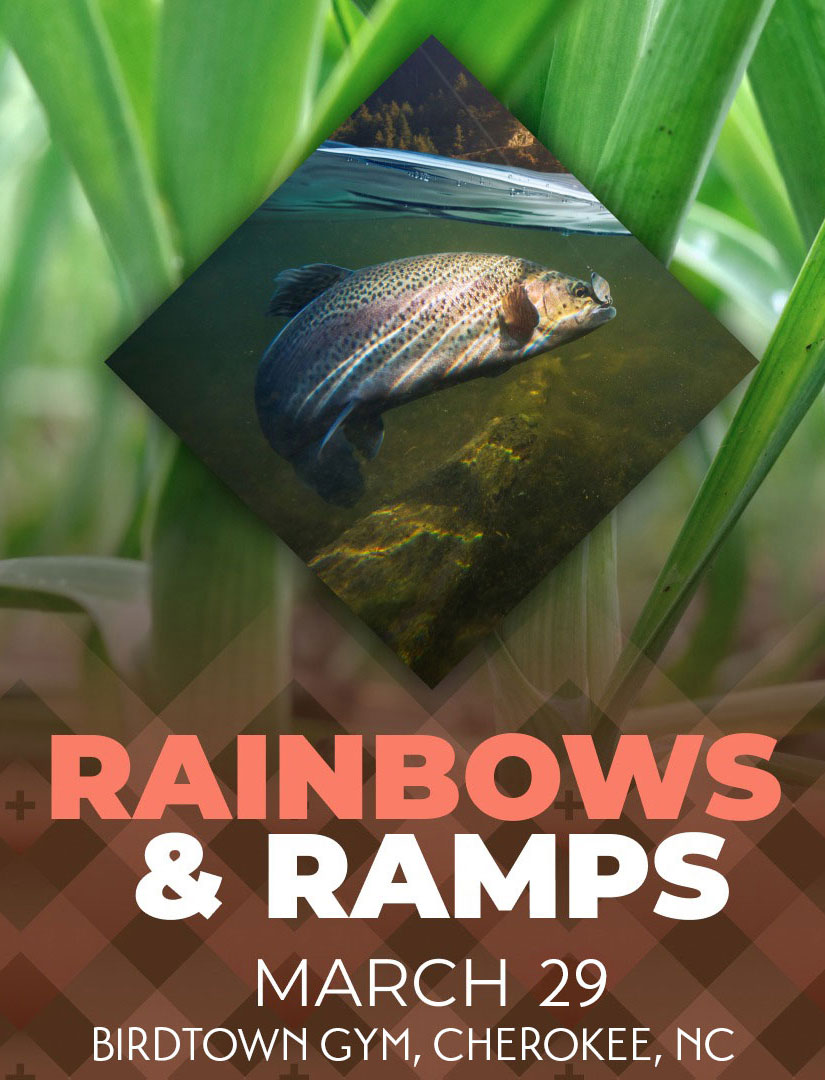By SCOTT MCKIE B.P.
ONE FEATHER STAFF
The Eastern Band of Cherokee Indians is taking a step towards its members being able to legally gather sochan in the Great Smoky Mountains National Park. During an Annual Council meeting on Monday, Oct. 9, Tribal Council allocated funds, not to exceed $68,100, for an EA (environmental assessment) on such gathering which is part of the process towards the Tribe entering into an agreement with the Park.
The National Park Service (NPS) approved changes to 36 CFR Part 2 (Gathering of Certain Plants or Parts by Federally Recognized Tribes for Traditional Purposes) in late June 2016. Tribes must enter into agreements with NPS and must have a “traditional association to lands within the national park and the plants must be gathered only for traditional purposes”. The EA is required with a FONSI (finding of no significant impact).
The resolution passed by Tribal Council on Monday was submitted by the EBCI Division of Agriculture and Natural Resources and states that the funds will be donated to the Friends of the Smokies, a non-profit organization, which shall facilitate the study.
Joey Owle, EBCI Secretary of Agriculture and Natural Resources, commented during discussion on the issue, “Right now, we’ll need this funding to execute the largest part of this agreement which is the environmental assessment. Each plant will require a new environmental assessment to look at the harvesting techniques and impacts to the plant harvesting population…but we’re going after sochan first.”
During the discussion, several Tribal Council representatives questioned the amount of funding required and stated they didn’t feel the Tribe should have to pay for the study.
“Well, I’ve got a problem with all of this,” said Painttown Rep. Tommye Saunooke. “That’s ridiculous.”
Principal Chief Richard G. Sneed said he originally balked at the funding as well. But, he noted that environmental groups opposed the rule change in the first place. “The fact that we got the rule change done at all was an accomplishment. The problem is that there is no funding attached to the rule change.”
He added, “So, here’s what we have to measure as a Tribe. Is the Eastern Band going to be a leader in Indian Country? We would be the first tribe to be able to gather in a national park since the inception of the national park and their rules against gathering native plants.”
Chief Sneed said he agreed that, in theory, the Tribe shouldn’t have to pay for the study. “But, at the end of the day, environmental assessments have to be done. That’s federal law. It has to be done. On the negative side, it sets a precedent that other tribes coming after us are going to have to pay as well to gather on national park lands that may be near their reservation. And, those other tribes may not have the resources that we have. But, I think on the flip side of it, if we don’t take this action and move forward, then the whole rule change and all of the work on the front end was for naught. It’s moot at that point because I can assure you the Trump administration is not going to fund EAs for tribes to be able to gather in the parks.”
Dr. Joe-Ann McCoy, director of the Germplasm Repository at the North Carolina Arboretum, was present for Monday’s discussion and noted that she and her colleagues are about to publish a sustainable harvest study on sochan. “We did nutrient panels on it and found it is as nutritious as kale. We did the sustainable harvest study. We found that the Cherokee method of harvesting actually benefits the plant, and the ones that were harvested actually produced more flower and fruit and seed than the ones that weren’t harvested.”
She went on to say, “It is the perfect first plant to use because it is so sustainable. It’s going to be very hard to wipe this plant out. The Cherokee methods tend to be very sustainable, and this one is very sustainable.”
Becky Walker, an EBCI tribal member from the Birdtown Community, put the expenditure of funds into perspective. “I know that a lot of you are haggling with the amount of money that we’re proposing to put forward to this, but I invite you to think about some of the other things that we’ve spent money on that were pretty frivolous, probably meeting personal agendas. So, when you think about who we are, where our roots are, and what this land means to us, this is not just for us present-day. We’re talking about seven generations. We’re talking about your great-great grandchildren and those that are going to come and live in this community that aren’t even born yet that will be able to gather in their ancestral homelands using the teachings of our ancestors.”
She said the funds will help for years to come. “When you look at it that way, that is an investment in our future for future generations to be able to live and eat healthier foods, to eat foods that are organic, to eat foods that haven’t been sprayed with pesticides and hybridized and are a product of some GMO company somewhere that we don’t even know about.”
Once the rule was changed in June 2016, NPS Director Jonathan B. Jarvis said in a statement, “The changes to the gathering rule support continuation of unique cultural traditions of American Indians and support the mission of the National Park Service. This also respects tribal sovereignty and the government-to-government relationship between the United States and the tribes.”
Director Jarvis actually visited Cherokee in 2010 and spoke with various tribal leaders and community members to hear concerns on the issue. “It became a mission of mine to fix this,” he said in a tribal consultation meeting at the Chief Joyce Dugan Cultural Arts Center on July 16, 2010.
Once the study and formal agreement is finalized on the gathering of sochan, the Tribe will seek a similar study and agreement on the gathering of ramps.




